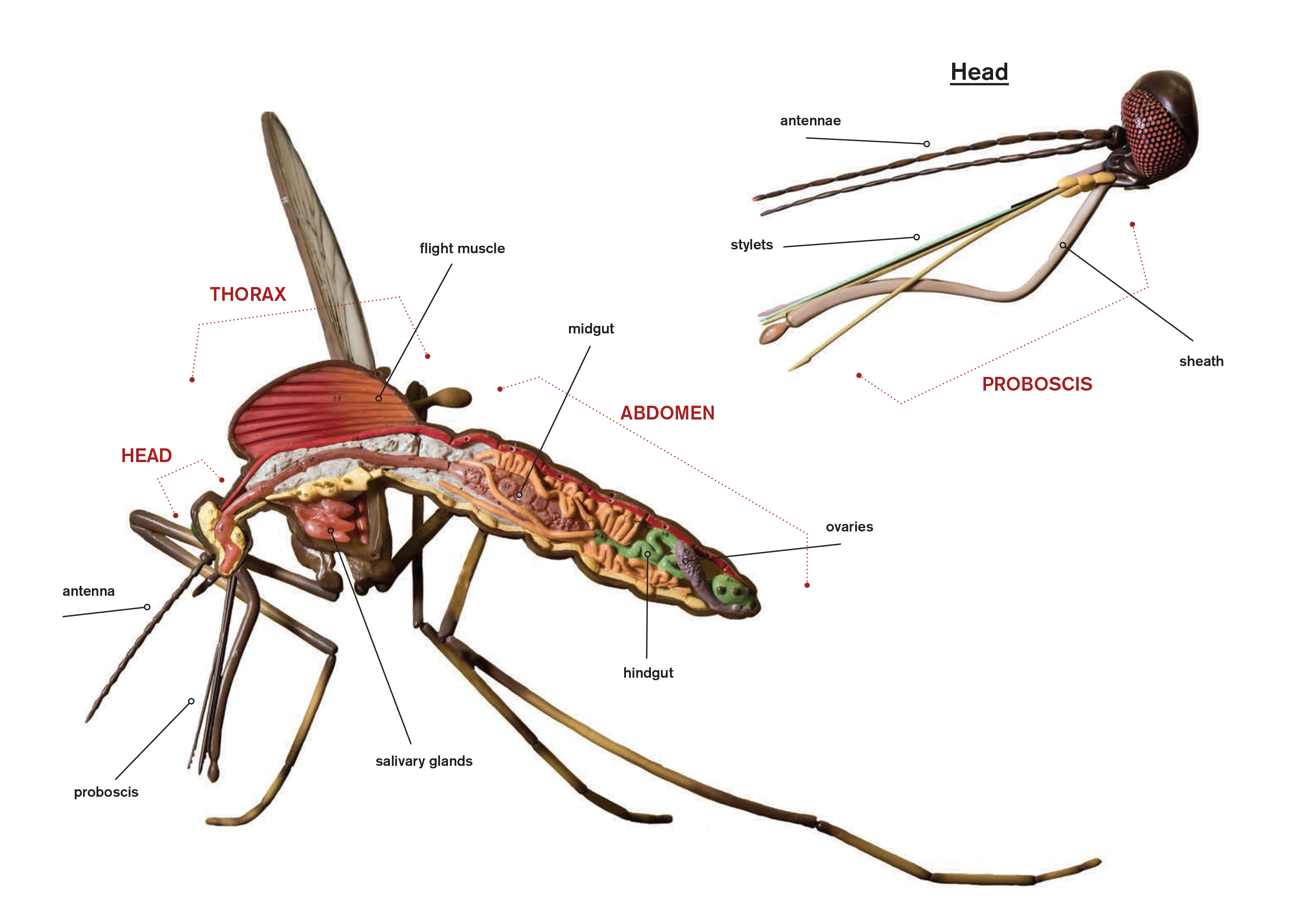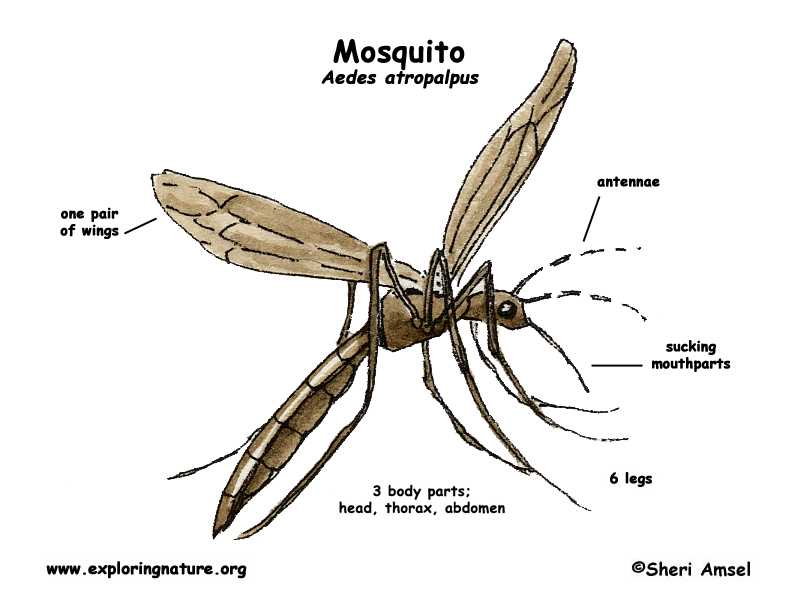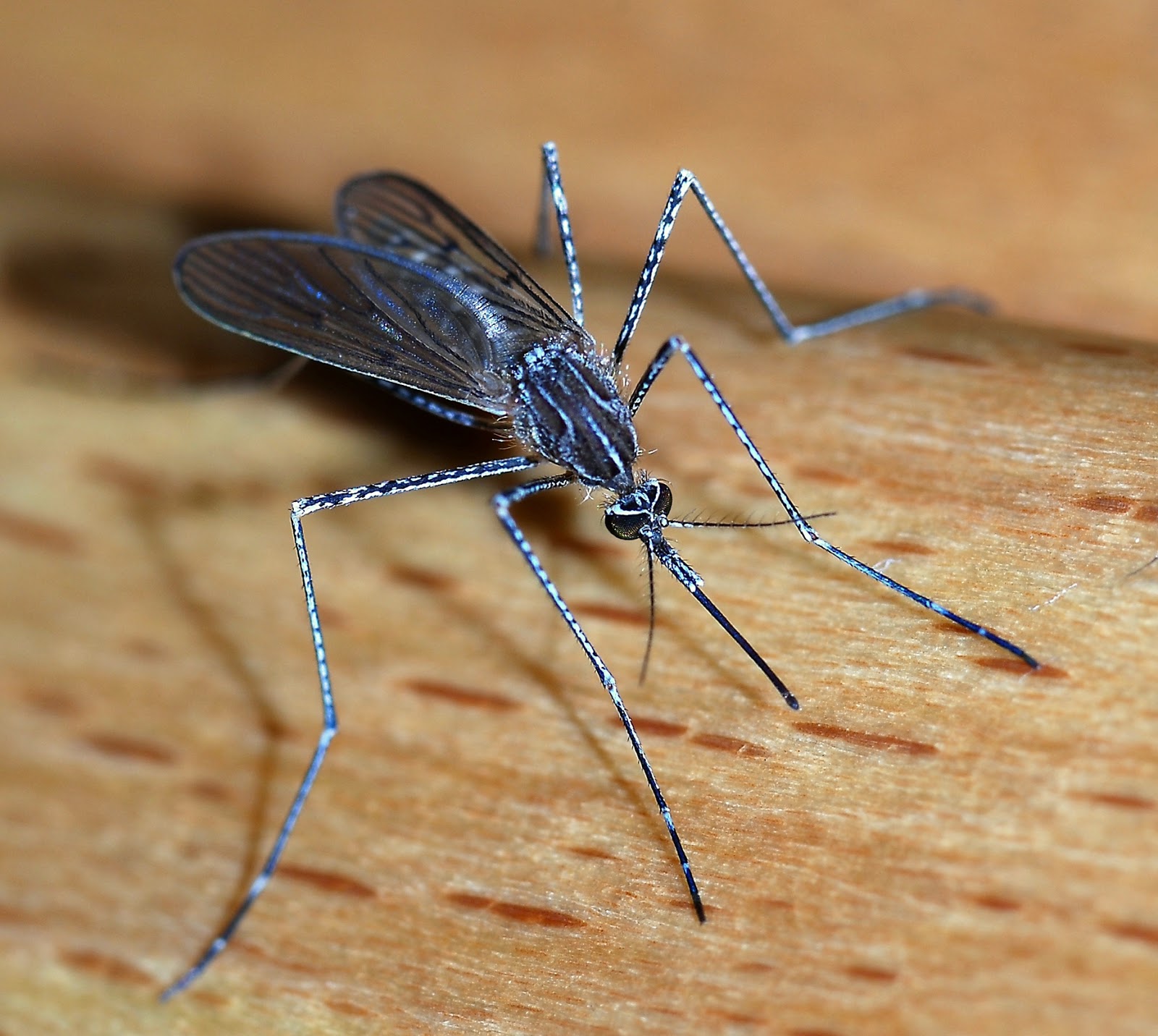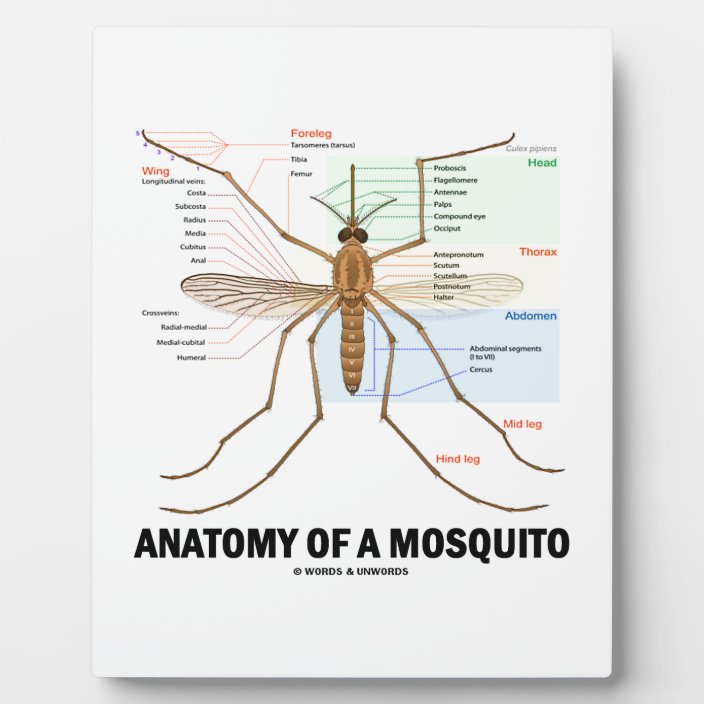
The buzz behind the bite Spring 2017 Seek Magazine Kansas State University
Mosquitos are true insects, meaning that they have three main body parts: head, thorax and abdomen. Mosquito head Mosquitos have a head that is round. The mosquito's head holds its sensory organs, including the brain, two compound eyes covered with tiny lenses called the ommatidia, plus photosensitive eyes, the ocelli, that detect light variations.

Mosquito
They have a head, thorax, and abdomen, a single pair of wings, and, in females, a proboscis adapted to piercing skin to obtain a blood meal. Is mosquito an animal or an insect? Mosquitoes are.

Do Male Mosquitoes Bite? Mosquito Squad
Adult mosquitoes, like other insects, have three body regions: the head, the thorax, and the abdomen. Each of these regions is further subdivided into segments, which may or may not be discernible as distinct units. In the head and thorax the segments are mostly fused and not easily distinguished. Segments of the abdomen are generally evident.

Pin on Mosquitoes
Print Mosquitoes are common, flying insects that live in most parts of the world. Over 3,700 types of mosquitoes can be found worldwide. Not all mosquitoes bite people or animals. When mosquitoes bite people, the most common reactions to the bite are itching and swelling. Some mosquitoes can be vectors.

Mosquito Microbiota and Implications for Disease Control Trends in Parasitology
The structure of a mature mosquito is divided into three main parts: Head - Thorax - Abdomen. The structure of a mature mosquito includes the following main parts: Mosquito head This is the area that contains the chemical, image, and thermal sensors. It also has the part of the proboscis used for sucking blood.

Anatomy of an adult mosquito Download Scientific Diagram
The life cycle of Aedes mosquitoes consists of four stages (egg, larva, pupa, and adult), with adults emerging anywhere from seven days to several weeks after egg hatching. Females deposit black-colored eggs singly on a moist surface (e.g., mud) close to the waterline in locations that experience flooding, such as marshes, tree holes, or plant.

Premium Vector Diagram showing body part of mosquito
Diversity among the dipterans: (from left to right, top) crane fly, horse bot fly, big-headed fly, moth fly, robber fly, (bottom) louse fly, bee fly, horse fly, gall midge, mosquito. (more) The slender, elongated body of the adult is covered with scales as are the veins of the wings.

All About MosquitoesLife Cycle Unit Study Only Passionate Curiosity
Like all insects, the mosquito has three basic body parts: head, thorax, and abdomen. Head: This is where all the sensors and the biting apparatus are located. The head consists of two compound eyes, antennae to sense chemicals and the mouth parts called the palpus and the proboscis (only in females).

Male mosquito parts Stock Image C006/0460 Science Photo Library
This worksheet allows students to learn the parts of a mosquito. Two versions included: the picture of a mosquito with labels and fill the labels with no word bank.

Evolution in software development Invisible to the eye
Mosquito body components: Like many insects, the body of a mosquito can be divided into 3 sections: the head, the thorax, and the abdomen. Head A mosquito's head is packed with sensory equipment, which helps mosquitoes find people and animals to feed on. The head of the mosquito is round and bears the two compound eyes of the insect.

28 Mosquito Anatomy Diagram Wiring Diagram Info
It's a sophisticated system of six thin, needlelike mouthparts that scientists call stylets, each of which pierces the skin, finds blood vessels and makes it easy for mosquitoes to suck blood..

Premium Vector Illustrator parts of mosquito
The mosquito life cycle. A mosquito lands on the surface of a puddle of rain water in an empty bucket left in the backyard. The mosquito squeezes its body to push out a small, whitish, oval ball—a mosquito egg. Female mosquitoes can lay dozens of eggs at a time on the water's surface or at the edge of the water.

Living with Nature School on Blog by Dr. Abercio V. Rotor The Mosquito World’s Deadliest
Description and life cycle Like all flies, mosquitoes go through four stages in their life cycles: , larva, pupa, and adult. The first three stages—egg, larva, and pupa—are largely aquatic, [5] the eggs usually being laid in stagnant water. [6] They hatch to become larvae, which feed, grow, and molt until they change into pupae.

Pin on Science Worksheets
Their bodies are divided into three main parts: the head, thorax, and abdomen, each with specialized structures and functions. Head The head of a mosquito houses essential sensory equipment that enables the insect to locate and feed on humans and other animals. This section provides an overview of the key structures found in the mosquito's head.

"Parts of a mosquito" Art Print for Sale by WrongHands Redbubble
Mosquito legs are composed of five parts: the coxa, which is attached to the thorax; the trochanter; femur; tibia; and tarsus. The tarsus, or foot, consists of five segments. The relative size of the tarsal segments and the presence of long erect scales on the hind tibiae are sometimes used in identification. Next. 24.

World Mosquito Day Tame the menace, control the spread of lifethreatening diseasesTech News
Mosquitoes are known as ‟true insects," meaning they have three major body parts: the head, thorax and abdomen. These three sections develop across three life stages: pupal, larval and adult. Each stage brings about unique features. For example, during the pupal stage, the mosquito has paddles to help it navigate through the water.